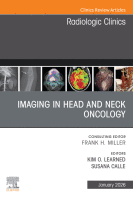IMAGE-GUIDED MANAGEMENT OF COMPLICATED PLEURAL FLUID COLLECTIONS - 06/09/11
Résumé |
Pleural fluid collections may be classified as uncomplicated or complicated.12 Uncomplicated pleural fluid collections refer to those that resolve with conservative therapy. In general, this includes transudative effusions and small free-flowing exudative effusions. Complicated pleural fluid collections refer to those that do not resolve without drainage. This includes moderate to large unilocular or multilocular parapneumonic effusions; empyemas; malignant effusions; and hemothoraces (either sterile or infected). Drainage of complicated pleural fluid collections is necessary to control pleural sepsis, allow re-expansion of the underlying lung, and to prevent the long-term sequelae of pleural fibrosis and lung entrapment.
Drainage of complicated pleural fluid collections has traditionally been accomplished by either closed-tube thoracostomy or by open surgical drainage. Closed-tube drainage is associated with a lower morbidity and mortality than open surgical drainage, but it may fail in a significant percentage of patients because of presence of loculations or the fibrinous nature of the fluid.
Two techniques have been used in an effort to improve the efficacy of closed-tube drainage: (1) image-guided placement of drainage catheters and (2) intracavitary fibrinolytic therapy (ICFT). Image-guided placement of thoracostomy tubes has been advocated to avoid the problem of tube malposition in relation to fluid loculations. Although this is effective in many patients, the drainage procedures tend to be prolonged and failure may still occur because of occlusion of the relatively small-bore catheters by fibrinous debris or clotted blood. Intracavitary fibrinolytic therapy has been advocated as a method to facilitate drainage of fibrinous pleural fluid through small catheters and to allow enzymatic débridement of the restrictive fibrin sheets covering the pleural surface. These two methods have significantly increased the effectiveness of closed-tube drainage and can obviate the need for surgery in most patients. This article reviews image-guided thoracostomy drainage and ICFT, including the rationale for their use, techniques of drainage, patient management, results, and an overview of their role in the larger spectrum of interventional pleural procedures. Emphasis is placed on the management of complicated parapneumonic effusions, because these are the most common entities encountered in clinical practice.
Le texte complet de cet article est disponible en PDF.Plan
| Address reprint requests to Jeffrey S. Moulton, MD, Department of Radiology, St. Anthony Central Hospital, 4231 West 16th Avenue, Denver, CO 80204 |
Vol 38 - N° 2
P. 345-374 - mars 2000 Retour au numéroDéjà abonné à cette revue ?



